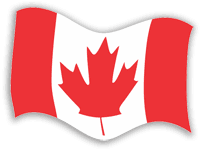|
Let me begin with one simple fact: Toronto’s public schools
declare themselves the most multicultural in the world. One
school, Thorncliffe Park Public School in Toronto’s east end,
has 1,913 students speaking 54 languages. What that means is
obvious — Canada today is a nation of immigrants.
But what we forget too easily is that Canada always was a
country of immigrants. Everyone who ever lived here came from
someplace else, including the First Nations whose ancestors
crossed into North America over a land bridge from Siberia.
Everyone. The original European immigrants of Canada were the
French followed by the Loyalists, the losers in the American
Revolution, who settled in the late 1780s in what is now Nova
Scotia, New Brunswick, Ontario, and Quebec. Most were of British
origin, devoted to King George III and Great Britain, but there
were also others of German, Dutch and other origins, as well as
blacks, most but not all slaves. Those “originals” largely
shaped Canada’s population mix for almost two hundred years.
Let me demonstrate. The Canada into which I was born in 1939 had
a population of some 11.5 million, according to the 1941 Census
figures, which was made up of those of British and French origin
(50 percent and 30 percent respectively) and the others (20
percent). The others were of German, Ukrainian, Scandinavian,
and Dutch origin in the main, with a scattering of other
ethnicities. There were few blacks, Chinese, Japanese, or South
Asians, the Canadian population almost wholly white.
Overwhelmingly the population was Christian with a few hundred
thousand Jews and a handful of other denominations. The
corporate, cultural, and political leaders in Canada were
overwhelmingly drawn from among those of British origin, and
French-speaking Quebeckers did not have anything like their fair
share of economic or political power.
It is certainly fair to say that nation-building, such as it
was, aimed to establish a British type of society in Canada.
Culturally, this was reflected in Canada’s political, economic
and social institutions. In law, all Canadians were defined as
British subjects until the passage of the Canadian Citizenship
Act in 1947, and a variety of cultural symbols ranging from the
monarchy to the flag and to the names of army regiments showed
the British underpinnings of English-speaking Canada. By and
large, the government either ignored racial and ethnic
differences or worked to turn all into British Canadians in
attitude if not in ethnic origin.
Obviously, Canada is very different today. In the 2006 Census,
the most recent, the “other” category, now with some 200
ethnicities, has reached 50 percent of the 31 million
population. For example, there were reported to be 1.35 million
Chinese, 962,000 East Indians, and 436,000 Filipinos, and one in
six Canadian residents was a visible minority. Christians still
predominate (some 70 percent), but as recently as 1951, 96
percent of the population was Christian. Today, there are far
more Roman Catholics than Protestants (40 percent of the
Canadian population is Catholic, only 30 percent Protestant),
and Muslims are approaching one million, far more than those of
Jewish belief. Those with no religion number one in six of the
population. In Greater Toronto, the nation’s largest city, very
close to half of the 5.1 million population were immigrants, an
increase of 27 percent in five years, and more than four in 10,
or 43 percent of the population, were visible minorities,
primarily Chinese, South Asian or black. India and China now
provide most of the immigrants to Canada and Toronto, and in an
ordinary year at least 250,000 immigrants come to the country,
more than four in 10 of them heading to Toronto. At the time I
was born and for my first 15 years, by contrast, the British
Isles were the main source of immigrants to Canada.
So Canada has changed, and certainly much for the better. There
are Members of Parliament in turbans, the Chief of Defence Staff
is of Ukrainian ethnicity and previous the Governor-General
Michaelle Jean is a Haitian woman immigrant who succeeded a
Chinese female immigrant, Adrienne Clarkson. Jews hold three of
the nine seats on the Supreme Court; a Jamaican-Chinese-Canadian
multimillionaire made a huge donation to add a giant extension
to the Royal Ontario Museum and a group of Italian-Canadian
millionaires matched that with equally grand gifts to the
redeveloped Art Gallery of Ontario; the public service is almost
as mixed as the nation; and Toronto’s public schools, for
example, declare themselves the most multicultural in the world.
It may even be true. Mixed-race marriages are increasingly
common in the larger cities, and adoptions abroad, especially in
China and Africa, have created multiracial families all across
the country.
There can be no doubt that this is a great success story.
Immigration changed the old Canada, and immigration is
continuing to do so. What the Canada of 2150 will look like, no
one can say — except that it will not look at all like the
Canada I grew up in.
Historian J.L. Granatstein is editor of The Canadian Experience.
He writes on Canadian political and military and on foreign and
defence policy.
Next Instalment: The Conquest of 1760 and its Consequences
The Canadian Experience is a 52-week
history series designed to tell the story of our country to all
Canadians. Sponsored by Multimedia Nova Corporation and
Diversity Media Services partners, the series features articles
by our country’s foremost historians on a wide range of topics.
Past articles and author bios are available at
http://www.cdnexperience.ca. The Canadian
Experience is copyright ©2010-2011 Multimedia Nova
Corporation.
|
List of
published "Canadian Experience" articles |
 #26 Immigrants Made Canada
#26 Immigrants Made Canada
